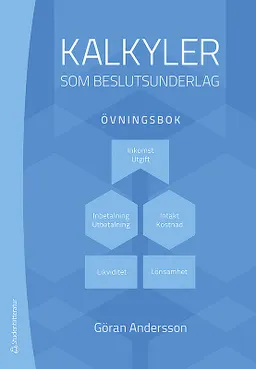List of Figures.
Preface.
Acknowledgments.
I. A NEW APPROACH TO BUSINESS SYSTEMS.
1. The Problem.
What This Book is about.
Why Should You Care?
What is a Business Rule?
The Way We Build Software.
The Vision.
How Could It Be?
Some Implications.
Is This Really Practical?
Moving Forward.
Where We Stand.
2. Frameworks, Architectures, and Models.
Needful Abstractions.
Frameworks.
Architectures.
Models.
Case Study: A Sample Business Architecture.
Overview.
Business Objects.
Business Process Elements.
Narratives.
Business Events.
Actors and Roles.
Business Intentions.
Organizational Units.
Business Rules.
What Does a Complete Model Look Like?
Model Summary.
II. CAPTURING BUSINESS RULES.
3. Defining Business Rules.
Rule Statements.
Business Rule Characteristics.
Business Aspects.
What Should a Rule Say?
Levels of Expression.
OCL.
Forming Rule Statements.
Pattern Conventions.
Rule Patterns.
Rule Sets.
Static Models Versus Rule Statements.
References to Facts.
Terms and Rules.
Individual Items.
References to Multiple Items.
Business Parameters.
Tips on Rule Construction.
Using Facts.
Simple Constraints.
Quantifications and Qualifications.
States and Events.
Actors.
Dangerous Verbs.
Computation.
Structure and Consistency.
Case Study: Microsoft Outlook.
Outlook Rule Structure.
Conditions, Exceptions, and Actions.
Internals.
Logic.
Outlook Rule Features.
Rule Description Summary.
4. Discovering Business Rules.
That Which We Call a Rule.
Where Rules Come Rrom.
Information Sources.
Common Indicators.
Finding Rules.
Static Analysis.
Interactive Sessions.
Automated Rule Discovery.
Case Study: Loan Approval.
The Early Stages.
Fishbones.
Input Data.
Loan-assessment Rules.
Rule-discovery Summary.
5. Controlling Rule Quality.
Developing Quality Rules.
Reviewing Rules.
What to Look for in Reviewing Rules.
Roles.
Rule Context.
Tone.
Review Outcomes.
Review Records and Approvals.
Walkthroughs.
Planning and Preparation.
Conducting a Walkthrough.
Inspections.
Planning and Preparation.
Managing an Inspection.
Testing.
The Use of Testing.
Test Implementation.
The Process of Testing.
Case Study: Testing the VBB Loan-application Rules.
Setting up the ABC Testing.
Assessing the Rules.
Choosing Test Cases.
Implementing the Rule Tests.
VBB Test Results.
Metrics.
Guidelines.
Minimum Metrics.
Quality Summary.
III. IMPLEMENTING BUSINESS RULES.
6. The Technology Environment.
More about Architecture.
A Typical Reference Architecture.
Business Flexibility.
Shared Resources.
Component Architecture.
Interfaces.
Component Interaction.
Transactions.
Server Pages and Ccripting.
State Management.
Implications for Business Rules.
Where Rules Live.
Client.
Channel Tier.
Middle Tier(s).
Data Services Tier.
Legacy Systems.
Summarizing the Technology Environment.
7. Realizing Business Rules.
Taking Stock.
Distributing Rules.
Realizing Rules.
Program Statements.
Scripts.
Rule Components.
Rules Engines.
Database Mechanisms.
Workflow Systems.
Look-up Tables.
Flags and Magic Codes.
System Rules.
Implementation Summary.
8. Managing Business Rules and Models.
Life-cycle Costs.
Managing Evolution.
Coping with Changes.
Automating Housekeeping.
Deploying Rules.
Testing a New System.
Rollout.
Supporting a Live System.
Tools to Support Rule Management.
Rule Repository.
Why a Repository?
Repositories and Rules Engines.
An Example Repository Design.
Rule Management Summary.
IV. THE ROLE OF BUSINESS RULES.
9. A Wider View.
Marshaling Intellectual Resources.
Knowledge Management.
Developing Knowledge Management.
Capturing Knowledge.
What's the Problem?
Knowledge Representation.
Enriched Models.
Packaging for Reuse.
New Kinds of Services.
Knowledge Summary.
10. Summing Up.
The Purpose of This Book.
Models.
Trends.
Business Process Reengineering.
Quality Management.
Reducing the Maintenance Burden.
Better Specification.
Distributed Computing.
Soft Assets.
Business Rule Characteristics.
Rule Populations.
Other Properties.
Who?
Where?
When?
Rule Programming.
Advantages of Business Rules.
Business Rule Features.
Categories of Benefits.
Appendix: A Little Bit of Logic.
Business Logic.
Why Logic?
Logic and Logics.
A Logical Framework.
Forms and Symbols.
Propositions.
What's a Proposition?
Standard Forms of Proposition.
Visualizing Propositions.
Alternative Forms of Propositions.
Logical Operations.
Syllogisms.
Other Kinds of Arguments.
Handling Logical Values.
Nothing but the Truth.
Combining Logical Values.
How Many Functions?
Final Words.
Selected Bibliography.
Index. 0201743914T03042002
Åtkomstkoder och digitalt tilläggsmaterial garanteras inte med begagnade böcker





















